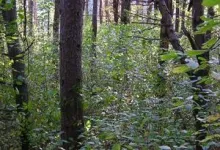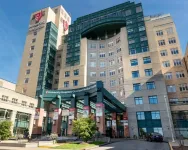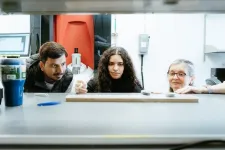(Press-News.org) URBANA, Ill. – Many U.S. forests are privately owned, particularly in the Eastern and North Central part of the country. This makes control of invasive plants and pests challenging because efforts must be coordinated across landowners. A new study from the University of Illinois Urbana-Champaign explores how differences in ownership motivation affects willingness to control, and how economic incentives can be implemented most efficiently.
“Some own the land for recreational purposes, some own it because they want to produce timber, and some are a combination of both. If one landowner controls invasive species but their neighbor does not for some reason, that could be problematic because the bioinvasion will spread over space and time,” said study author Shadi Atallah, associate professor in the Department of Agricultural and Consumer Economics, part of the College of Agricultural, Consumer and Environmental Sciences at Illinois.
Currently, conservation cost-share programs reimburse forest landowners for up to 75% of the cost of controlling invasive species. However, this is not necessarily the most efficient use of funds, Atallah noted.
“When you're incentivizing someone to do something, you would like to know they weren't going to do it without the incentive, or you have wasted your money. Would it make sense to change who qualifies for these payments in a way that optimizes the effect?”
Atallah employed game theory to explore these questions, using the example of glossy buckthorn in U.S. Eastern white pine forests. Glossy buckthorn is a fast-growing shrub that is exotic and invasive in North America. It can form a dense, persistent layer in forest understories, interfering with the growth of young pine trees and affecting wildlife habitat.
In a previous study, Atallah surveyed Maine and New Hampshire family forest landowners to understand how their willingness to control glossy buckthorn was motivated by the shrub’s effects on timber, trail recreation, and wildlife viewing. For the current study, he developed a theoretical modeling framework that estimated how each type of landowner would act and how their neighbor would respond, given various circumstances over a period of time.
“The model focuses on two cases: one is the recreationist, who likes to hike and enjoy the land, but they don't like that the invasive shrub will block their path and interfere with wildlife viewing. The other is the timber producer, who gets a reduced amount of timber if the invasive shrub prevents white pine from growing to maturity,” he explained.
Atallah also considered the connectivity between forests and how the bioinvasion spreads to surrounding areas.
“Some invasive species are mostly spread by short distance dispersal, such as squirrels or other small mammals, while other species are spread through long-distance dispersal, such as birds and waterfowl, and the spread can be either fast or slow. Another factor is where the bioinvasion first appears and whether it makes sense to prioritize control at the starting point,” he said.
He found that in most scenarios, the recreationist would not control the invasive shrub without cost-share payment, while the timber owner would choose to control regardless of subsidies.
“Only in the case of fast long-distance dispersal does control get so expensive that nobody can do it without support. This is consistent with what we are currently doing; everybody qualifies for it. However, in all other cases – slow long-distance dispersal, and slow or fast short-distance dispersal – it would make sense to pay only the recreationists, who act as sources of bioinvasion spread when they refrain from control.”
Atallah noted that this may not seem fair; however, the timber landowners would still benefit even if only the recreationists are subsidized, because the spread is contained earlier and to a larger extent.
“We find the cost of control for the timber producers becomes lower once you have cleaned up the neighboring forestlands. Instead of partially reimbursing both types of landowners, the money could be used to cover 75% of control for the recreationist, and as a result, the timber owner would have less invasive species to deal with and control would be less expensive.”
The study provides one example of different landowner motivations, but this doesn’t mean the same dynamic always plays out, Atallah stated.
“My conclusion is that we should provide the subsidy to the weakest link, which is the entity that wouldn’t act otherwise and ends up acting as the source of the externality. In this case it’s the recreationist, but you could imagine a situation where it was the other way around. The model is adaptable to any given scenario,” he said.
“The idea is to consider any two different motivations to own the resource and how that could lead to different decisions in terms of controlling bioinvasion spread, and thinking about prioritizing those who would not control without subsidies.”
The paper, “Spatial Bioinvasion Externalities with Heterogeneous Landowner Preferences. A two-agent bioeconomic model,” is published in Land Economics [DOI: 10.3368/le.101.2.112024-0209].
END
Forest landowner motivation to control invasive species depends on land use, study shows
2025-02-04
ELSE PRESS RELEASES FROM THIS DATE:
Coal emissions cost India millions in crop damages
2025-02-04
In many parts of India, a single noxious pollutant from coal-fired power stations drags down annual wheat and rice yields by 10% or more, according to a new study by Stanford Doerr School of Sustainability researchers.
The two grains are critical for food security in India, the second most populous country in the world and home to a quarter of all undernourished people globally.
“We wanted to understand the impact of India’s coal electricity emissions on its agriculture because there might be ...
$10.8 million award funds USC-led clinical trial to improve hip fracture outcomes
2025-02-04
The University of Southern California has been approved for $10.8 million in research funding by the Patient-Centered Outcomes Research Institute (PCORI) to compare approaches to treating older adults with a fracture of the hip. Led by principal investigator Joseph Patterson, MD, an orthopaedic surgeon specializing in fracture care at Keck Medicine of USC, the “FASTER-Hip” trial aims to determine whether patients with a certain type of hip fracture fare better with a hip replacement or a simpler surgery known as internal fixation.
The trial leadership team includes ...
University Hospitals Cleveland Medical Center among most reputable academic medical centers
2025-02-04
CLEVELAND -- University Hospitals Cleveland Medical Center is one of the most recognizable hospitals among doctors in the U.S. and around the world, according to an annual survey.
UH Cleveland Medical Center was ranked eighth in the U.S. and 16th globally in a survey of the strongest Academic Medical Center brands, according to Brand Finance, a London-based brand valuation consultancy.
“This ranking is a reflection of all we do at University Hospitals to provide compassionate care for patients, work to find the next generation of therapies and treatments, invest ...
Emilia Morosan on team awarded Kavli Foundation grant for quantum geometry-enabled superconductivity
2025-02-04
Rice University physicist Emilia Morosan is part of an international research collaboration that has been awarded multimillion-dollar funding from The Kavli Foundation to develop and test next-generation superconductors through artificial intelligence and quantum geometry. This global initiative, spearheaded by Päivi Törmä of Aalto University in Finland, seeks to push the boundaries of quantum materials science and superconductivity.
The project includes funding from the Klaus ...
Unlock sales growth: Implement “buy now, pay later” to increase customer spending
2025-02-04
Researchers from Imperial College Business School and University of Leeds published a Journal of Marketing study that examines the impact of BNPL installment payments on retail sales. The study, forthcoming in the Journal of Marketing, is titled “Buy Now Pay Later: Impact of Installment Payments on Customer Purchases” and is authored by Stijn Maesen and Dionysius Ang.
Buy-Now-Pay-Later (BNPL) is an increasingly popular payment method, allowing customers to spread payment into interest-free installments over a few weeks or months. Worldwide ...
Research team could redefine biomedical research
2025-02-04
Professor Leslie Wolf, a Distinguished University Professor and Ben F. Johnson Jr. Chair in Law at Georgia State University College of Law, is a part of a research team that has been provided $1.9 million to conduct research designed to increase participation in biomedical studies by involving participants in the research design process. The award has been approved pending completion of a business and programmatic review by PCORI staff and issuance of a formal award contract.
Wolf, along with colleagues at the ...
Bridging a gap in carbon removal strategies
2025-02-04
Biochar: bridging a gap in carbon removal strategies
As the world works to meet net-zero carbon goals, a new study offers a critical reminder: precision matters. The researchers suggest refining how we assess a natural carbon storage strategy to ensure the technology lives up to its potential as a climate change solution.
Biochar, a charcoal-like material derived from plant biomass, has long been hailed as a promising tool for carbon dioxide removal. However, a new study by Stanford researchers highlights a critical issue: current methods for assessing biochar's carbon storage potential may significantly undervalue its true ...
Outside-in signaling shows a route into cancer cells
2025-02-04
A new study shows how an anticancer drug triggers an “outside in” signal that gets it sucked into a cancer cell. The work, published Jan. 29 in Nature Communications, reveals a new signaling mechanism that could be exploited for delivering other drugs.
Many malignant cancers overexpress a protein called P-cadherin, which is embedded in the cell membrane. Because cancer cells have a lot of P-cadherin sticking out of their surface, the protein has been targeted for drug development.
Monoclonal antibodies against P-cadherin can carry a drug payload to the cancer cells. It has not been clear, though, exactly how the antibodies attach to P-cadherin ...
NFL wives bring signature safe swim event to New Orleans
2025-02-04
NEW ORLEANS, Feb. 4, 2025 — The American Heart Association, a global force changing the future of health, is promoting water safety, a multi-market priority initiative for the Off the Field National Football League Wives Association. The American Heart Association provided Hands-Only cardiopulmonary resuscitation (CPR) and automated external defibrillator (AED) education as part of the safe swim event held at Tulane University’s Reily Center on Tuesday, Feb. 4. The event welcomed nearly ...
Pickleball program boosts health and wellness for cancer survivors, Moffitt study finds
2025-02-04
TAMPA, Fla. (Feb. 4, 2025) — A new community-based pickleball program called Project Rally is helping cancer survivors improve their physical and social well-being, according to a recent pilot study led by researchers at Moffitt Cancer Center. The program, which is offered in partnership with the YMCA of the Suncoast, has shown strong results in terms of participation, enjoyment, and physical improvements.
Staying active is a key part of cancer survivorship care and research. Physical activity can help reduce the negative effects of cancer and its treatments, while also empowering survivors to live fulfilling lives. It offers many ...




